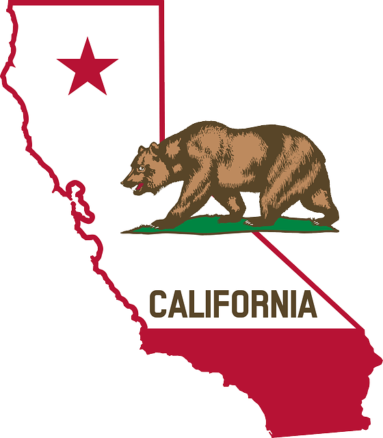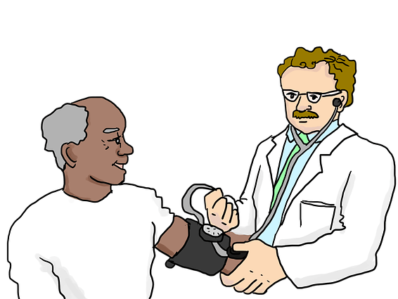Pension
Membership
Membership in the retirement system is effective on the FIRST DAY of the first full pay period after employment by the County. Every regular full-time employee employed for a minimum of 30 hours per week becomes a member of the Imperial County Employees' Retirement System. (Membership is mandatory except for elected officials and newly hired employees who have attained the age of 60.) It should be noted that all benefits are computed using your time in the retirement system, not time worked for the County.

Membership is divided into two categories:
1.- Safety Members
Eligible employees whose principal duties consist of active law enforcement, active fire suppression and certain probation officers (per Section - 31469.4 Gov't code and resolution of the County Board of Supervisors) are safety members. In cases of doubt as to whether a member is general or safety, the Board of Retirement shall decide.
- Sheriff - Coroner
- Assistant Sheriff (Undersheriff)
- Chief Deputy
- Lieutenant/Correctional Lieutenant
- Sheriff Sergeant/Correctional Sergeant
- Correctional Corporal
- Correction Captain
- Deputy Sheriff
- Senior Deputy Sheriff
- Correctional Officer
- Safety Ranger - Supervisor
- Safety Ranger - Boating
- D. A. Investigators
- County Probation Officer
- Deputy County Probation Officer
- Probation Division Manager
- Probation Division Manager
- Probation Division Manager
- Probation Corrections Facility Manager
- Deputy Probation Officers I, II and III
- Juvenile Officers - Juvenile Hall
- Victim Witness Program Supervisor
- Probation Assistant
- Shift Supervisor - Juvenile Hall
- Fire Chief/Emergency Services Coordinator
- Assistant Fire Chief
- Fire Fighters I and II
- Fire Fighter Mechanic
- Deputy Emergency Services Coordinator
- Fire Captain
- Fire Training Officer
- Disaster Planner/Fire Prevention Officer
Note: Job titles change from time to time
2.- General Members
All other eligible employees
Confidential Information
All individual member records of the retirement system are confidential by law and such records may not be disclosed to anyone other than the member, except in the administration of the Retirement Law, or upon order of a court of competent jurisdiction, or upon written authorization of the member. Therefore, INFORMATION PERTAINING TO A MEMBER'S INDIVIDUAL RECORDS CANNOT BE GIVEN BY TELEPHONE. If you have a specific question in connection with your participation in the Retirement Program that is not covered herein, or you desire information to assist you in planning your retirement, you may write or call the Retirement Office as follows:
Imperial County Employees' Retirement System
1221 W. State Street
El Centro, CA 92243-2863
Telephone: (442)265-7550
Fax: (442)265-7545
Website: https://icers.imperialcounty.org
Dissolution Marriage
California is a "Community Property" State, and certain retirement benefits may be subject to division by the court in the event of a Dissolution of Marriage ("Divorce"). Determining your rights and obligations in a Dissolution of Marriage can be complex. Your attorney is your best source of information and advice. A handout entitled "Information for Attorneys and Parties in Dissolution of Marriage Cases" answers some commonly - asked questions on this subject, and is available from the Retirement Office
Annual Reports
An annual (fiscal) financial report and actuarial report is available on ICERS' Website or by contacting ICERS.
Annual Member's Statement
An annual member's statement is sent out in January. The statement shows the member's name, address, beneficiary and the balance in the member's account (member contributions and interest).
Beneficiary Designation
All members must sign a "Member's Enrollment Affidavit" giving the name of their beneficiary and the relationship. To change a beneficiary, the member must make the designation on the proper retirement forms obtained from ICERS or its website. The retirement law states that in some cases a surviving spouse, domestic partner, or minor children have rights to a member's retirement benefits whether or not they are named as beneficiary.
Previous County Service
A MEMBER WHO ELECTS TO PURCHASE RETIREMENT SERVICE CREDIT SHALL COMPLETE THAT PURCHASE WITHIN 120 DAYS AFTER THE EFFECTIVE DATE OF HIS OR HER RETIREMENT (Govt. Code Section 31485.7). ICERS members who wish to purchase permissive service credit in the retirement system (military, redeposit, leave of absence and time prior to membership according to ICERS' bylaws) may now do so by transferring funds from either a 457 or 403(b) plan, or a traditional Individual Retirement Account. For more information contact ICERS at (442) 265-7550.
- Members who, prior to entering ICERS, held a position in county service, the tenure of which was such as to exclude them from membership (extra help, part time, seasonal, or temporary), shall have the right to receive credit for such service if they elect to pay for it and thereafter pay in accordance with their election and Government Code Section 31641.5, prior to retirement.
- A member who returns to active service following an uncompensated leave of absence due to illness may receive service credit for the period of such absence, upon the payment of contributions the member would have paid during such period of absence together with interest that contributions would have earned had they been on deposit if the member was not absent. Credit may not be received for any period of such absence in excess of 12 consecutive months. (Gov't Code Section 31646).
Any member who was resigned, or obtained a leave of absence, to enter and did enter the armed forces of the United States on a voluntary or involuntary basis and returned to service within one year after separation there from, under honorable conditions, shall receive credit for service and prior service for all or any part of military service, if, before retirement he or she contributes what he or she would have contributed at the time of resignation plus interest, if the service is not a basis for military retirement pay. (Govt. Code Section 31649.5).
A member may redeposit accumulated contributions previously withdrawn, plus interest accrued from date of separation from the system at any time prior to presenting an application for retirement and receive credit for such service. (Gov't Code Section 31652.) A Former member who is in the service of an employer as an employee of a law enforcement agency or fire department whose principal duties consist of active law enforcement or fire fighting and prevention service may redeposit contributions for past employment in another reciprocal system. A former member may exercise this right by re-depositing into the retirement fund of the system he/she left, the amount of accumulated contributions and interest that he/she withdrew from ICERS plus regular interest thereon from date of separation. (Govt. Code Section 31831.3).
Deferred Retirement
Deferred Retirement Reciprocal Benefits with another Retirement System
Certain reciprocal benefits are available to members who accept employment with the State of California, another county under the 1937 Act County Employees' Retirement Law, any public agency that contracts for retirement coverage under the Public Employees' Retirement System (CalPERS), or the State Teachers Retirement System (CalSTRS), if the member elects to take a deferred retirement and enters the second retirement system within 180 days of termination of membership in the first system; the advantages a member has under reciprocity are:
A. When a member retires from both systems concurrently the retirement allowance from Imperial County will be based on the highest average(3 year) pensionable compensation in either system.
B. Members may combine the service in both systems to meet the minimum requirements for service retirement, disability retirement and death
benefit.
Any member desiring to take advantage of these benefits is requested to contact ICERS prior to leaving service in order to sign an application and give information concerning reciprocity.
1937 Act Counties:
- Alameda, Los Angeles, Sacramento, Santa Barbara, Contra Costa, Marin, San Bernardino, Stanislaus, Fresno, Mendocino, San Diego, Sonoma, Imperial, Merced, San Joaquin, Tulare, Kern, Orange, San Mateo, Ventura.
- State of California Teachers' Retirement System(CalSTRS).
- State of California and contracting agencies(CalPERS).
- Judges Retirement Systems (JRS and JRSII)
- San Luis Obispo County Pension Trust.

Retroactive Reciprocity:
Any member who left County service on or before December 31, 1971 and became a member of another "1937 Act" system or "P.E.R.S." prior to January 1, 1978, may retroactively establish reciprocity. For further information, contact the Retirement Office.
Deferred Retirement:
Members terminating County service who have completed five years of service, may elect in writing within 180 days of termination of employment, to leave their accumulated contributions with the retirement system and take a deferred retirement to become effective either:
1. At any time at which the member could have retired had that member remained in service in a full-time position, or position, or
2. Not later than the first day of the month following that in which the member attains the applicable compulsory retirement age, if any, or
3. A member on deferred retirement without reciprocal benefits must retire by April 1st in the year in which the member reaches age 70 1/2. (Gov't
Code Section 31706)
In the event of the member's death before receiving a retirement allowance, the contributions, with interest, will be paid to their beneficiary. Members may rescind their request for deferred retirement prior to the effective date of their retirement and withdraw their accumulated contributions, provided they have not elected to receive reciprocal benefits in another retirement system. Service shall include credited as an employee of a reciprocal system when the member retires concurrently from all systems. A member whose combined does not meet minimum service qualifications may not retire.
Disability Retirement
Application for Disability Retirement
Application for disability retirement should be made promptly, and in no event later than applying for withdrawal of contributions or regular service retirement. Other time limits may apply. Inquire at the Retirement Office at any time you believe you may be disabled.
An employee who resigns or who takes regular service retirement and applies for disability retirement is not entitled to reinstatement to County service if disability retirement is denied.

Service - Connected Disability Retirement
- Disability is the result of a job incurred injury or disease.
- No minimum age or service requirement.
- Member must be permanently disabled for the substantial performance of duty. Monthly retirement allowance for this benefit is equal to one half of the member's annual compensation earnable or their regular retirement allowance, whichever is greater. Applications for disability retirement must be obtained from Retirement Office and properly filed.
Non-Service - Connected Disability Retirement
- Disability is not the result of a job incurred injury or disease.
- Member must have a minimum of five years retirement service credit regardless of age.
- Member must be permanently disabled for the substantial performance of duty. Monthly retirement allowance for this benefit is based on a non service connected disability formula. Applications for disability retirement must be obtained from the Retirement Office and properly filed.
Disability Forms:
Survivor Benefits
Death of Retired Members-Survivor's Benefits
The surviving spouse may be entitled to receive a monthly allowance of 60% of the deceased member's retirement allowance providing:
- The allowance was not modified in accordance with the optional settlements
- Surviving spouse was married to the member at least one year prior to retirement or
- Surviving spouse was married to the member at least two years prior to the date of death and has attained the age of 55 years on or prior to the date of death and no other person has been designated in an order of a Court in a domestic relations proceeding as a payee .
If there is not a qualified spouse, the unmarried children may receive the same benefit until attaining age 18, or 22 if enrolled full-time in an accredited school as determined by the Board of Retirement.
The surviving spouse shall continue to receive the same retirement allowance as the member, providing:
- The allowance was not modified in accordance with one of the optional settlements.
- Surviving spouse was married to the member prior to the date of retirement or
- Surviving spouse was married to the member at least two years prior to the date of death and has attained the age of 55 years on or prior to the date of death and no other person has been designated in an order of a Court in a domestic relations proceeding as a payee.
If there is no eligible surviving spouse, the unmarried children may receive the same benefit until age 18, or 22 if enrolled full-time in an accredited
school as determined by the Board of Retirement.
Death and Survivor's Benefits - Active Members:
- Basic Death Benefit: (Section 31781 and 31784) Refund of member's accumulated contributions plus a salary benefit which is one month's salary (based on the average 26 biweekly pay periods preceding the death of the member) for each year of retirement credit not to exceed six months of salary.
Member's beneficiary may receive the death benefit in a lump sum or in 120 equal monthly installments.
- Optional Death Benefit: (Section 31781.2) The surviving spouse of any member under 50 years of age with 10 or more years of retirement credit may elect to leave the basic death benefit on deposit until the member would have reached age 50, and receive 60% of the deceased member's retirement allowance for life. Upon death of the surviving spouse this allowance is continued to the surviving unmarried children up to the age of 18, or age 22 if enrolled full-time in an accredited school as determined by the Board of Retirement.
- Combined Death Benefit: (Section 31781.3) The surviving spouse of any member who died while an active member in service with five or more years of retirement credit, or as a result of a service- connected disability, may choose to receive the salary benefit (under section one) plus, a reduced monthly retirement allowance for the remainder of their life.
- Optional Death Allowance - Non-Service Connected: (Section 31781.1) A surviving spouse of any member who died while an active member in service with five or more years of retirement credit may elect to receive 60% of the member's disability retirement allowance for life instead of the basic death benefit.
If there is no surviving spouse entitled to this benefit such allowance shall be continuous to the member's surviving children under the age of 18 or 22 if enrolled as a full-time student in an accredited school as determined by the Board of Retirement. The rights and privileges conferred by this section upon the surviving spouse and/or children of such deceased member shall not be dependent upon whether they or any of them shall have been nominated by the deceased member as the beneficiary of any benefits payable upon or by reason of his/her death, but shall be superior to and shall supersede the rights and claims of any other beneficiary so nominated.
- Optional Death Allowance - Service-Connected Disability: (Section 31787) A surviving spouse of any active member who died as a result of a service-connected disability may elect to receive the member's service connected disability retirement allowance for life. If there is no surviving spouse entitled to the benefit, such allowance shall be continuous to the deceased member's surviving unmarried children under the age of 18, or 22 if enrolled as a full-time student in an accredited school as determined by the Board of Retirement.
- Additional Death Benefit - Service-Connected Disability: (Section 31787.5) This benefit applies to members whose duties consist of active law enforcement or active fire suppression only.
To a surviving spouse of a member killed in the line of duty or who dies as a result of any injury or disease caused by external violence or physical force while in the performance of duty shall receive an additional allowance based on the number of surviving unmarried children under the age of 18, or 22 if enrolled as a full-time student in an accredited school as determined by the Board of Retirement.
Allowance
- Child - 25% of basic allowance (Provided by section 31787)
- Children - 40% of basic allowance (Provided by section 31787)
- or more Children - 50% of basic allowance (Provided by section 31787)
- Death by Violence - Safety Members: (Section 31787.6) A surviving spouse of a safety member who is killed in the performance of duty or who dies as a result of accident or injury caused by external violence or physical force shall receive a one-time lump sum benefit equal to the annual compensation earnable by the deceased at his/her monthly rate of compensation at the time of his/her death.
If there is no eligible surviving spouse, the unmarried children may receive the same benefit until age 18, or 22 if enrolled full-time in an accredited
school as determined by the Board of Retirement.
If there is no eligible surviving spouse, the unmarried children may receive the same benefit until age 18, or 22 if enrolled full-time in an accredited
school as determined by the Board of Retirement.
The member's designated beneficiary will receive the member's contributions plus interest. If the member was on deferred status with reciprocity to another system the benefits are coordinated between the two systems

